For most Christian pilgrims to the Holy Land, Jerusalem is the climax of their journey. After all, the redemption of the universe occurred there. History knows no more significant city.
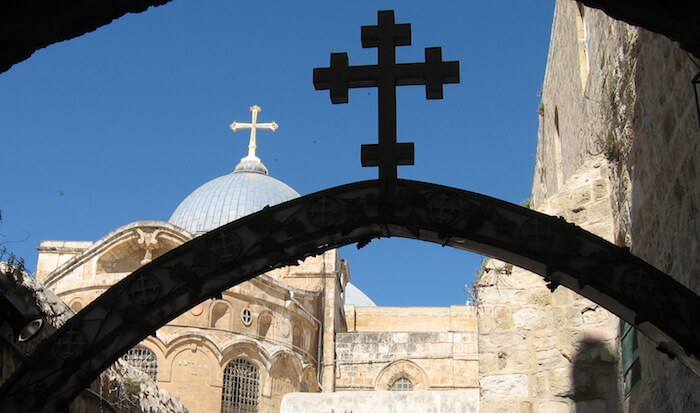
(Photo: Jerusalem’s Church of the Holy Sepulcher)
In my previous post, I shared 5 Christian sites in Jerusalem you should know about—including the Mount of Olives, the Pools of Bethesda, and the Pool of Siloam.
With very few exceptions, we can’t stand on a square foot of ground and claim, “Jesus walked here.” But we can point to areas where biblical history aligns with the geography of Jesus.
Let’s add 5 more Christian sites to the previous list. These are sites in Jerusalem associated with Jesus’ death and resurrection.
The Upper Room
Christians since the first century have venerated this site on the Western Hill as the Upper Room where Jesus celebrated the Passover and Last Supper with His disciples (see Biblical Archaeology Review, 16:03, May/June 1990).
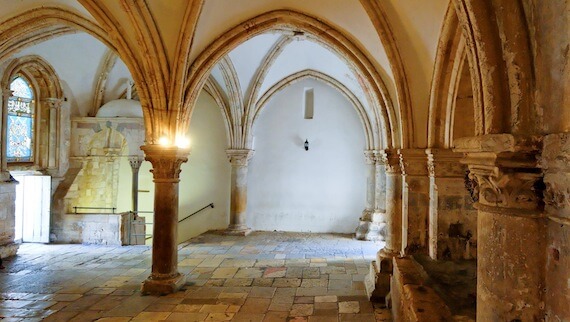
(Photo: The site of the Upper Room in Jerusalem. Courtesy of the Pictorial Library of Bible Lands)
Although most of what we see today dates to the Crusader period, archeological remains date back to the second century, a time when it would have been difficult and risky for Christians to congregate in this place—unless they had a good reason.
If the archaeology and tradition bear true, this is the Upper Room where Jesus gave hope that the New Covenant would begin by the shedding of His blood (Luke 22:20). The Hebrew prophets anticipated a promised “New Covenant” would write the Law on the hearts of God’s people through the giving of the Holy Spirit (Isaiah 59:20-21; Jeremiah 31:31-34).
Garden of Gethsemane
Tradition points to a place at the base of the Mount of Olives as the site where Jesus and His disciples often met.
The name Gethsemane means, “oil press,” and inside a small cave beside the garden archaeologists have uncovered an ancient press. The Byzantines believed the grotto represented the place where Jesus left eight of His disciples while He took three others to pray a short distance away (Luke 22:41).
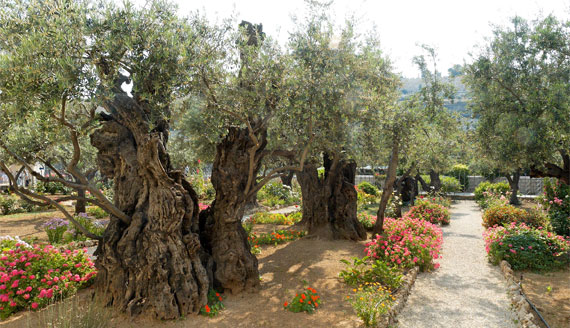
(Photo: Olive Trees in the Garden of Gethsemane. Courtesy of the Pictorial Library of Bible Lands)
Today’s Church of All Nations has a façade with a beautiful mosaic that depicts Jesus in prayer. Inside, beautiful paintings and a wrought-iron vine of thorns surround a 10-square-foot mass of limestone, called the “Rock of Agony,” the traditional spot where Jesus prayed in the Garden of Gethsemane.
The Via Dolorosa and the Citadel
Jerusalem’s modern Via Dolorosa—the “Way of Suffering” that venerates Jesus’ walking route from Pilate’s Praetorium to Golgotha—owes its location to tradition, not history. The same is true with the nearby Ecce Homo Arch and the Monastery of the Flagellation.
Unfortunately, for many Christian sites, tradition trumps truth and history.
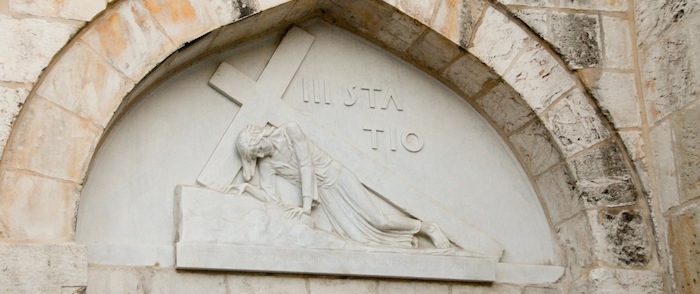
(Photo: Via Dolorosa Station 3 commemorates Jesus’ first fall. Courtesy of the Pictorial Library of Bible Lands)
The misunderstanding occurred because many assume Pilate judged Jesus at the Antonia Fortress, which was located at the northwest corner of the Temple Mount.
However, Josephus indicated that the Roman governor resided in Herod the Great’s palace—the Tower of David Citadel beside today’s Jaffa Gate—and set up his judgment seat before it (Wars, 2.14). Philo affirms that Pilate stayed in the palace (Leg. in Caium, 38, 39).
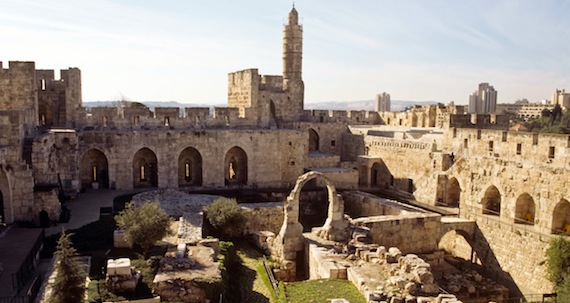
(Photo: Courtyard of David Citadel. Courtesy of the Pictorial Library of Bible Lands)
The site of Herod’s palace and Pilate’s residence today house the David Citadel museum, which offers an unparalleled history of Jerusalem and a microcosm of Israel’s history.
The Church of the Holy Sepulcher
All credible historical scholarship points to the Church of the Holy Sepulcher as the site Jesus was crucified, buried, and resurrected. Of all Christian sites in the world, this one is the most important.
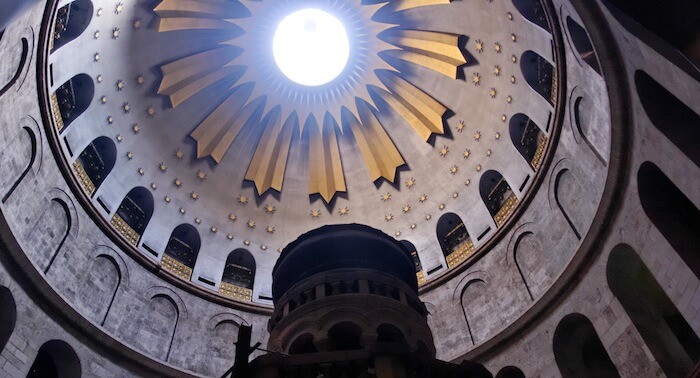
(Photo: The Holy Sepulcher’s dome covers Christ’s tomb. Courtesy of the Pictorial Library of Bible Lands)
The Aramaic name of the first-century place of crucifixion, Golgotha (calvaria in Latin), has death in its translation. It means, “The Place of the Skull.”
- Christians in Jerusalem held worship services at this site until AD 66.
- The Roman Emperor Constantine built a church on the site in the fourth century. But the church has seen its share of trouble since that time, as different religions and sects have crammed their traditions into the church’s fixed spaces.
- What we see today is largely from the Crusader period.
Here’s a (long) video that depicts the building and rebuilding of the church throughout history:
Garden Tomb
This is the only place on the list of Christian sites that isn’t associated with Jesus in history. However, there is no better place in Jerusalem to commemorate His death and resurrection than the Garden Tomb.
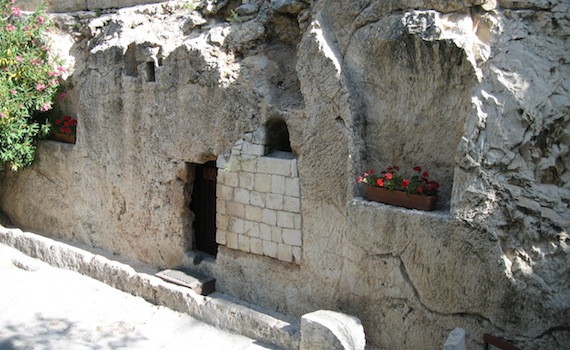
(Photo: The Garden Tomb in Jerusalem)
In 1883, General Charles Gordon pointed to a rocky outcropping near an ancient tomb and noted how the recesses in the cliff resembled the eye sockets of a skull. He took it to be “the place of the skull”—the location of Jesus’ crucifixion that all four gospels mention.
The serene surroundings include a peaceful garden with fragrant flowers, benches for relaxation and reading, pathways for strolling and prayer, and high walls to block out the cacophony of the unsightly surrounding streets.
Tell me what you think: What other Christian sites in Jerusalem would you add to the list? To leave a comment, just click here.
